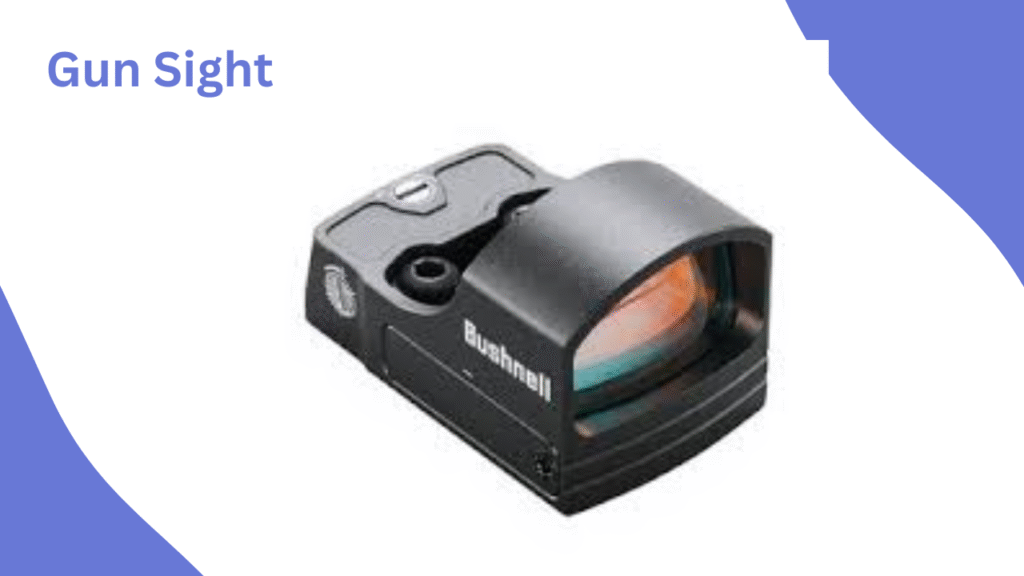Choosing the right gun sight is crucial for improving shooting accuracy, target acquisition, and overall firearm performance. A high-quality gun sight can make a significant difference whether you are a beginner learning proper aim, a hobbyist practicing recreational shooting, or a professional shooter in competitive or tactical scenarios. Modern gun sights, including red dot sights, holographic sights, and iron sights, offer different advantages based on range, speed, and precision. Understanding these options helps shooters select the most suitable sight for their firearm and shooting style.
In addition to accuracy, durability, ease of use, and compatibility with firearms are essential considerations. Choosing a reliable sight ensures consistency, safety, and better performance in various shooting conditions, from hunting and target practice to tactical applications.
In this article, I will tell you about the different types of gun sights, their key features, installation tips, and how to choose the best gun sight to meet your specific needs.
What is a Gun Sight?
A gun sight is a device attached to a firearm that helps the shooter aim accurately. It improves target acquisition and shooting precision. There are two main categories: open sights (like iron sights) and optical sights (like red dot or scopes). Each type offers specific advantages depending on your shooting needs.
Types of Gun Sights
Iron Sights
Iron sights are the traditional type of sight, consisting of a front post and rear notch. They are durable, simple, and low-cost. Ideal for beginners and for those who prefer a classic shooting style.
Red Dot Sights
Red dot sights allow quick target acquisition using a projected red dot on the lens. These sights are popular in tactical shooting and competitive sports. They are especially useful for moving targets.
Holographic Sights
Holographic sights use a laser-illuminated reticle to create a holographic image on the sight window. They offer fast aiming, wide field of view, and are ideal for tactical and professional applications.
Magnified Scopes
Scopes with magnification are designed for long-range shooting. Hunters and precision shooters often prefer them for targeting distant objects with accuracy.
Reflex Sights
Reflex sights are compact and lightweight. They are often used in competitive shooting where speed and mobility are essential.
Key Features to Consider When Buying a Gun Sight
Accuracy
The primary purpose of a gun sight is to improve shooting precision. Consider sights that match your shooting style and range requirements.
Durability
Look for high-quality materials, water resistance, and shockproof designs. Durable sights last longer and withstand heavy usage.
Ease of Use
Check for adjustable reticles and simple mounting systems. A sight should be easy to use and quick to align.
Compatibility
Ensure the sight is compatible with your firearm type, caliber, and mounting system.
Battery Life
For electronic sights like red dot or holographic, battery life is crucial. Long-lasting batteries reduce the risk of failure during shooting.
Factors Affecting Gun Sight Choice
Your shooting environment greatly affects which sight to choose. If you shoot outdoors, you might need weather-resistant scopes or magnified sights. For indoor shooting, red dot or reflex sights are usually better. Other factors, like the type of target (moving or stationary), your budget, and your shooting experience, also play an important role in deciding the right sight.
Pros and Cons of Different Gun Sights
- Iron Sights: Durable and reliable, but slower to aim.
- Red Dot Sights: Fast aiming, best for close to medium range, requires batteries.
- Holographic Sights: Excellent for moving targets, higher cost.
- Magnified Scopes: Ideal for long-range shooting, less effective at close range.
Knowing these differences helps you pick the best gun sight.
Installation and Maintenance Tips
Install Correctly – Follow the manufacturer’s instructions when mounting the sight to make sure it stays accurate.
Keep Lenses Clean – Wipe lenses gently and often so you always get a clear view.
Check Calibration – Adjust your sight regularly to keep performance at its best.
Use Safe Cleaners – Avoid strong chemicals that can damage the optics.
Common Mistakes to Avoid When Buying a Gun Sight
- Choosing solely based on price : Cheap isn’t always good, and expensive doesn’t always mean best.
- Ignoring compatibility with your firearm : Not every sight fits every gun model.
- Not testing the sight under real shooting conditions : What looks good in a store may not perform well at the range.
- Overlooking eye relief and comfort : A sight should feel natural and comfortable when aiming.
- Skipping research on different sight types : Each type (red dot, reflex, holographic, scope) has pros and cons.
- Neglecting durability and build quality : A weak sight may fail in harsh weather or long use.
- Forgetting about battery life : Electronic sights can fail at the wrong moment if power runs out.
- Not considering your main shooting purpose : Hunting, self-defense, or target shooting all require different features.
- Ignoring weight and size: A bulky sight can affect handling and balance.
Avoiding these mistakes ensures that you get the best value and performance.
Recommended Gun Sight Uses
- Hunting: Magnified scopes and red dot sights are popular.
- Tactical and Defense: Holographic and red dot sights provide speed and accuracy.
- Competitive Shooting: Reflex and red dot sights are preferred for quick target acquisition.
- Recreational Practice: Iron sights or budget-friendly red dot sights work well.
Conclusion
Choosing the right gun sight is one of the most important steps for improving shooting accuracy and overall performance. Whether you are interested in hunting, sport shooting, or tactical use, a well-selected sight can give you clearer target acquisition and more confidence in every shot. From red dot optics for fast aiming to magnified rifle scopes for long-distance precision, every shooter can find an option that matches their needs. Always consider firearm compatibility, environment, and personal preferences before making a purchase.
By avoiding common mistakes and maintaining your sight properly, you ensure lasting durability and value. A carefully chosen gun sight not only enhances your skills but also makes your shooting experience safer and more enjoyable.


токарный станок по металлу с чпу для дома [url=http://tokarnyi-stanok-s-chpu.ru]http://tokarnyi-stanok-s-chpu.ru[/url]